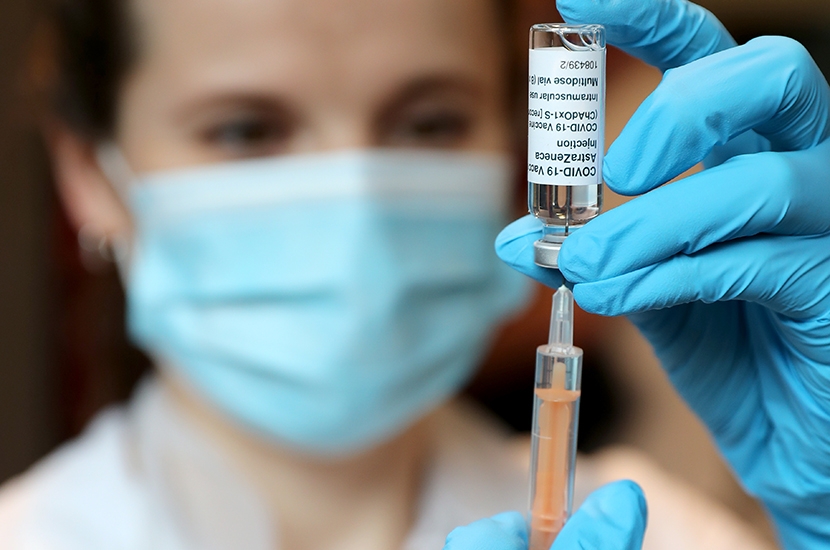We have a government which is basically libertarian in its instincts, despite its current affection for telling us what we can and can’t do on a daily basis. This seems like a paradox or a non-sequitur, but it isn’t really, because in a sense it is a coalition government between libertarian politicians and a big-statist regulatory medical clergy. It is an interesting political marriage, a marriage of expediency. And it will soon become very strained.
The government is about to run into big problems over its rollout of the Oxford-AstraZeneca vaccine, which many scientists believe could have a causal link to the prevalence of blood clots in a very small minority of the people who take it. The European Medicines Agency is about to announce the official finding into all this. Our own Medicines and Healthcare products Regulatory Agency is perhaps similarly minded and may soon suggest the jab should not be given to under-sixties. Several British epidemiologists, such as Professors Neil Ferguson and Paul Hunter, have suggested a causal link is more likely than not.
The risk to society is greater if we do not take our jabs, but the risk to some individuals may be too close to call
This will unquestionably deter some people from getting their jab, especially in the younger age groups. The government’s advice is that we should continue to receive our first and second jabs because the risk of not doing so far, far outweighs the risk of thrombosis. But I am not entirely sure that this is correct. The risk to society is far more dangerous if we do not take our jabs. But the risk to certain individuals may be too close to call, frankly, or even the other way about.
Look at the figures. The medicines regulator has said that 30 blood clots have been reported out of the 18.1 million people in the UK who have already had the Oxford vaccine, of which seven people have died. That seems, on the face of it, an incontestably tiny proportion — which is why, of course, the government and the docs wheel it out. But there are problems with this figure. The blood clots have tended to present themselves in the younger age groups: we do not yet have the statistics for precisely what age group is the most vulnerable. However, we do know that of those 18.1 million vaccines, the overwhelming majority were given to people over the age of 60. It was only one month ago, fully 12 weeks into the rollout, that people in their fifties were asked to come forward for their first shots. The further you go down through the age groups, the more blood clots are likely to appear — which is perhaps why everyone is beginning to get worried about them now, because they have only recently started to present in numbers.
The point I am making is that 30 thromboses out of 18.1 million vaccines is rather misleading. The likelihood, indeed the certainty, is that it becomes very much higher than that because hitherto it has largely been the elderly who have been vaccinated, and they are apparently far less susceptible to this unfortunately lethal side effect. The overall figure would probably be closer to the 1.5 per 100,000 which has been suggested by various international agencies.
Now, imagine that you are a healthy twentysomething woman and are weighing up the pros and cons of having your jab. The figures so far suggest that women are more susceptible to the blood-clotting side effects than men, particularly younger women. What are your chances, if you are a woman within that age range, of contracting Covid and then dying as a consequence of it? On the latest figures, your chance of having been diagnosed with the wretched bug has been almost one in ten, while your chance of dying of it has been approximately 2.3 in 100,000. That is a similar level of risk to getting a clot from the vaccine, even on that 1.5 per 100,000 figure which we already know is an underestimate for people in your age range, because it covers all ages.
In other words, the reluctance of people to come forward for their shots — which will be described as witless plebeian jackasses misunderstanding the science by the experts and government ministers — probably has a very good scientific rationale, even if they don’t know it. Nor should we single out poor old AstraZeneca, mind. Who knows, just yet, what side effects will attend those vaccines which have not been given to huge numbers of people so far? The caveat to my numbers, incidentally, is that while there may be a causal link between the vaccine and blood clots, we do not know that there was a causal link in every one of those who developed the clots. The other caveat is that all these figures still represent only a tiny amount of risk.
So a reluctance to take the jab may be well founded in some age groups. Further, that reluctance is likely to be deepened by the fact that if they do take their jab, their own lives will not be enhanced as a consequence. Still masked up and barred from travel, etc. The government is aware of this, which is why the debate over Covid passports has suddenly gained such traction. The ministers know that an incentive is needed among those age groups for whom Covid poses very little risk indeed — at the very most a risk comparable with having the vaccine.
The only way you can sell the vaccine, then, is through engendering a sense of communitarianism. Or at least, that’s the only honest way. You are taking this jab, despite the tiny risk that goes with it, not to benefit yourself, but for the good of the country. If it is sold the right way, with sufficient wartime exhortations of sacrifice and duty, people might sign up. Otherwise, they just smell a rat.







Comments